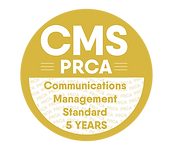Objective ‘change criteria’ could be decisive in driving health reform
14 November 2016 - by Tristen KelsoHealth Minister Michelle O'Neill has published a new consultation on her vision for health and social care in Northern Ireland.
That consultation on Criteria for Reconfiguring Health and Social Care Services, launched this past Friday, is a welcome sign. Health reform must be a transparent process, driven by objective measures, and this is what the published criteria represent.
The Assembly Opposition will, today, note the publication of this plan. It is important to consider, however, that which is contained within it.
According to this latest roll-out of the Minister’s intentions, she is proposing seven criteria for assessing the sustainability of health and social care services, including:
-
there is evidence that patients outcomes are below acceptable levels;
-
the service cannot meet professional standards;
-
the permanent workforce is not available/cannot be recruited or retained;
-
there is an effective alternative ‘out of hospital’ care model or an alternative ‘shared care’ delivery model;
-
cost of service is considerably more than an ‘out of hospital’ alternative.
The logic is that the performance of all services will be measured against these objective criteria, introducing a new degree of scrutiny of, and public accountability for, the delivery of such novel concepts in health and social care as best value for money, care delivered in the appropriate place, optimal outcomes for patients, and, most significantly, the introduction of added transparency to how services are delivered.
This new approach is to be well received, but, for it to be truly effective, it will necessitate measuring of services against these objective criteria and benchmarking against alternative models. In essence, it will require health and social care to know how well current models are delivering. This means gathering data, and making it publicly available.
In the same week these objective criteria were published, a reminder of the challenges we face was given in response to an Assembly Question relating to age-related hearing loss (audiology services). In brief, the Minister was unable to furnish the most basic average cost per patient/pathway costs, citing the ‘disproportionate cost’ of providing the requested information. This compares with published tariffs of cost per patient publicly available elsewhere, in jurisdictions where services have already been modernised. Surely such basic information, essential in managing value for money, should be actively collated and regularly reported upon?
Age-related audiology is another example of a service where, using the Minister’s proposed criteria, patient outcomes are below acceptable levels, there exist serious staff recruitment and retention difficulties, the service is likely costing significantly more than an alternative ‘out of hospital’/community alternative and there is definitely an effective alternative ‘out of hospital’ care model. The latter is well established in community and high street settings in other parts of the UK – and available for use in Northern Ireland. It represents the ideal fit for a service ripe for reconfiguration.
Back to the objective criteria then. Those being put forward could represent the radical shake-up that’s needed to ensure services deliver maximum outcomes for citizens, along with best value for money. Offering users meaningful input in shaping the services they access will make commissioners and delivery bodies more accountable. And that can only be a good thing.








